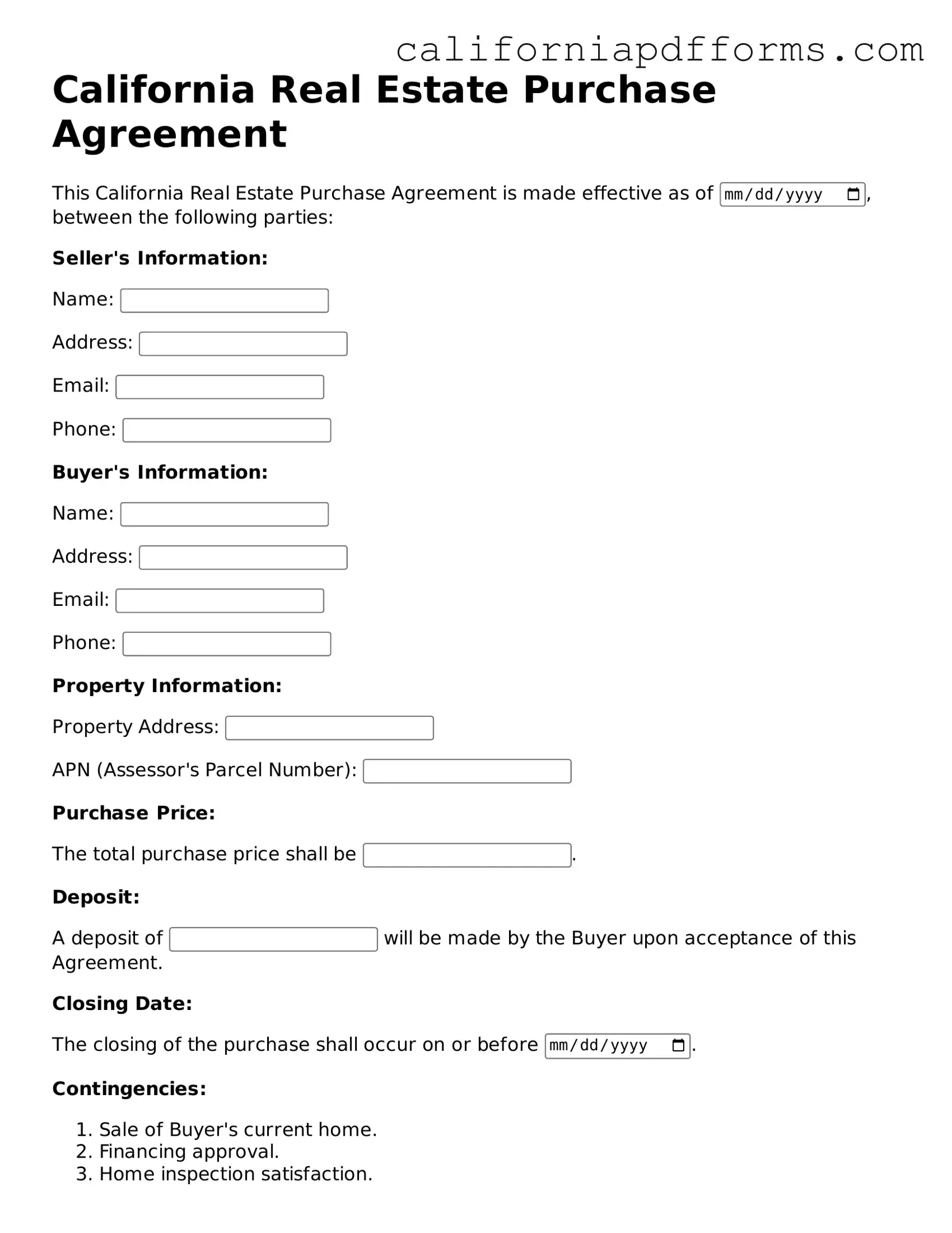Official Real Estate Purchase Agreement Template for the State of California
The California Real Estate Purchase Agreement form is a legally binding document that outlines the terms and conditions of a real estate transaction between a buyer and a seller. This form serves as a crucial tool in ensuring that both parties are clear on their obligations and rights throughout the buying process. To get started on your real estate journey, fill out the form by clicking the button below.
Open Your Form Online
